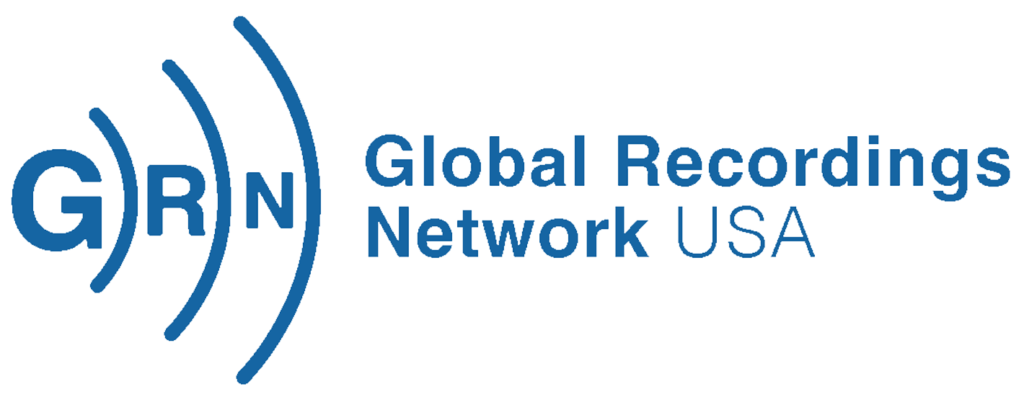September 3, 2025
The Role of Technology in Modern Missions: How God Is Opening New Doors
For centuries, missionaries carried the Gospel across oceans by ship, trekked through jungles on foot, and learned languages by living among the people. Today, the mission is the same — to proclaim the Good News of Jesus Christ in every nation — but the tools God has given us are dramatically different. Technology is reshaping the way the Gospel is shared, breaking barriers that once seemed impossible to cross.
In this article, we’ll explore how technology is transforming modern missions and how ministries like Global Recordings Network (GRN) are using these tools to reach the unreached.
Technology and the Great Commission
When Jesus commanded His disciples to “make disciples of all nations” (Matthew 28:19), the scope was global. For centuries, the challenge has been reaching people in remote, closed, or linguistically diverse regions. Today, advances in technology are helping the Church fulfill that mission in unprecedented ways.
From Bible translation software to smartphone apps, the digital age has given missionaries the ability to cross barriers of distance, literacy, and culture like never before.
Audio Recordings: Reaching Oral Cultures
One of the greatest challenges in world missions is that many people belong to oral cultures. In these communities, stories, traditions, and knowledge are passed down verbally rather than through writing. Written Scripture often doesn’t connect with them the way spoken words do.
That’s where audio recordings shine. A short Gospel story recorded in a heart language can have a greater impact than an entire printed Bible in a trade language. GRN has been creating audio and visual recordings in over 6,000 languages to ensure that no community is left without a clear witness to Christ.
Recordings are not only easy to distribute but also easy to understand — even in places where literacy is low or nonexistent.
The 5fish App: The Gospel in Your Pocket
Smartphones are nearly everywhere, even in regions with limited infrastructure. This creates an incredible opportunity for missions. GRN’s 5fish app allows users to instantly access Gospel recordings in thousands of languages.
Whether it’s a missionary sharing a message with someone they meet, or a local believer passing it along to their neighbor, 5fish puts the Gospel in the palm of their hand. In places where carrying a Bible might be dangerous, a discreet app can open the door to life-changing conversations.
The app also empowers believers worldwide to participate in missions simply by downloading and sharing recordings with those around them.
Mapping the Unreached
Another remarkable use of technology is the development of interactive language maps. GRN and partner organizations are using mapping tools to pinpoint the location of thousands of language groups around the world.
These maps are not just academic resources — they are mission guides. They help recording teams know where to go, identify refugee populations who may have fled into accessible regions, and collaborate with other ministries working toward the same goals.
By combining traditional fieldwork with digital mapping, missionaries can better steward their resources and focus on the communities most in need.
Social Media: Targeted Evangelism
Social media is often criticized for its distractions, but in the hands of the Church, it becomes a tool for evangelism. Ministries are now able to place targeted ads that reach people in specific languages, regions, or even refugee camps.
This kind of outreach was unthinkable just a decade ago. Today, a seeker scrolling through their phone in North Africa or the Middle East might encounter a Gospel message in their own language — because technology made it possible to reach them.
Social media also gives believers everywhere a platform to share stories, testimonies, and resources. What was once limited to face-to-face encounters can now ripple across the world in seconds.
Collaboration Through Technology
One of the quiet revolutions technology has brought to missions is partnership. Through secure communication platforms, cloud storage, and shared databases, ministries can collaborate across continents.
For GRN, this means partnering with Bible translators, local churches, and global mission networks to avoid duplication and accelerate progress. When recordings are produced, they can be instantly uploaded, shared, and integrated into apps, websites, and social platforms for maximum reach.
Technology is allowing the global Church to work together like never before — and the results are multiplying.
The Unchanging Foundation: Prayer
While technology opens doors, it is not the source of power. The true strength of missions has always been — and always will be — prayer.
At GRN, prayer fuels every breakthrough. Teams depend on God for protection, divine appointments, and open hearts. Prayer warriors around the world are joining in daily through the GRN Prayer App, weekly email updates, and global movements of intercession.
Technology is a tool, but prayer is the glue that holds the mission together. As we innovate and adapt, we remember that it is God who transforms lives.
How You Can Be Part of This Mission
The role of technology in missions is not just for missionaries — it’s for every believer. Here are a few ways you can get involved:
-
Download the 5fish app and share Gospel recordings with someone in your community.
-
Join the GRN prayer movement and lift up the needs of recording teams daily.
-
Support recording projects financially so more languages can hear the Good News.
-
Spread awareness online by sharing GRN resources through your own social media.
Together, we can press on toward the day when every tribe, tongue, and nation has the opportunity to hear the message of Jesus in their own language.
Conclusion
Technology has changed the landscape of missions, but the heart of the Great Commission remains the same. God is using apps, maps, recordings, and social platforms to do what once seemed impossible. The Church now has tools to reach the unreachable — and the invitation is open for you to take part.
The Gospel is moving forward in powerful ways. Will you join in?
